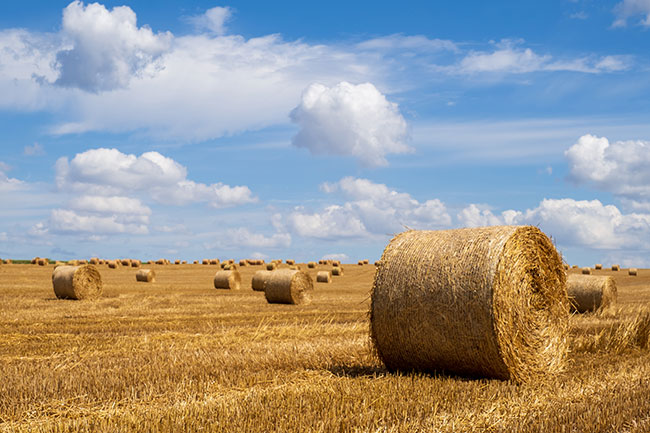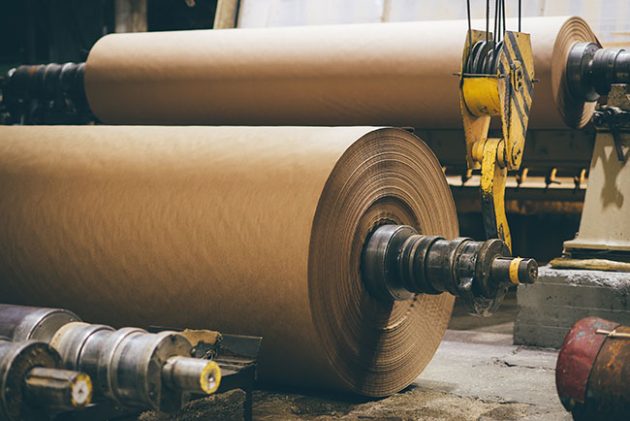
Features
Bioeconomy
Paper
Pulp
New kid on the block: Red Leaf Pulp adds wheat straw into the mix
Canada’s pulp mix – and circular economy – is about to grow, thanks to Red Leaf Pulp.
November 2, 2021 By Treena Hein
 Red Leaf’s pulp will be a viable short fibre substitute for eucalyptus pulp.
Photo:photoguns/ Getty Images
Red Leaf’s pulp will be a viable short fibre substitute for eucalyptus pulp.
Photo:photoguns/ Getty Images Canada’s pulp and paper sector is about to add another type of renewable raw material into the mix: wheat straw.
B.C.-based Red Leaf Pulp, established in 2019, is set next year to break ground in Regina, Sask., with Canada’s first non-wood pulp mill, “producing a unique natural-coloured product demanded by the global US$350 billion pulp and paper market.”
Red Leaf’s initial plant in Regina will begin production in 2023. The plant will have the capacity to produce 182,000 tonnes of market pulp annually from wheat straw collected from local producers. This represents a $350-million direct investment in the local community, with 110 permanent full-time jobs and 250 jobs during construction.
Red Leaf was established by Darby Kreitz, the founder of Allnorth Consultants, a large privately-held engineering firm with offices across Canada and in Atlanta, Georgia. Allnorth has long-term experience in the design and commissioning of both non-wood and wood-based pulp mills in North America and Europe.
Red Leaf CEO Martin Pudlas notes that Allnorth and other key partners Valmet, IEM and CNG have been exceptional in assisting in the development of its process and markets. “We are all very excited about the progress to date,” he says. “There is tremendous interest in ag pulp from converters, many of whom have sustainability targets in place that include non-wood furnishes.”
The launch of Red Leaf in 2019 was followed by a major announcement about ag-pulp in April 2020 by Mohawk Fine Papers, North America’s largest manufacturer of fine papers and envelopes. That month, the firm unveiled ‘Mohawk Renewal,’ a portfolio of papers made from wood pulp and agricultural fibres.
This year, in April 2021, the complete ranges of Mohawk Renewal Hemp, Mohawk Renewal Straw and Mohawk Renewal Recycled Cotton papers achieved compliance recognition from the U.S. Food & Drug Administration for use in packaging with direct food contact. The hemp, straw and wood pulps for these papers are derived from fields and forests, and the cotton pulps are produced from cotton clippings from the garment industry.
Feedstock source
Presently, there is very little ag pulp available in North America. Pudlas says that out of the 200 million tonnes of pulp that’s produced per year worldwide, roughly six percent of it is non-wood pulp, but the majority is integrated.
The wheat straw that will be gathered and fed into Red Leaf’s process will come from Prairie wheat fields after the grain is harvested. Producers will gain extra income from their straw providing an alternative to various existing limited markets like animal bedding. Red Leaf estimates that the change to laying down the straw and baling it, rather than chopping it in a combine followed by the required harrowing process, will result in a fossil fuel reduction of roughly 50 percent.
“We will take care of all the aggregation logistics and have had a great response from local growers,” says Pudlas. “According to Natural Resources Canada’s statistics, the amount of cereal grain straw produced in the lower half of the three Canadian Prairie provinces represents about two-thirds of the volume of feedstock used by the entire Canadian wood pulp sector every year.” There is therefore tremendous potential for Red Leaf to scale up.
Besides using crop residuals, Red Leaf is also highly environmentally sustainable in its process. “We are solving the ‘black liquor’ problem,” Pudlas explains. “The co-product that’s created in our process is higher in silica than wood pulp black liquor, making it difficult to fire in a conventional recovery cycle. So, we needed to develop a pathway that would extract value while meeting effluent regulations.”
Red Leaf has also chosen to make a natural-coloured product. Pudlas explains that in a typical kraft mill, the bleaching process consumes the equivalent of one out of every 10 trees harvested to meet market expectations for products such as bathroom tissue and kitchen towel. There is no reason these products have to be white, says Pudlas, other than the historical consumer perception of quality. “In the end, our unique natural colour will be a differentiator for us.”
Imports into Canada
But wait, there’s more to Red Leaf’s environmental story. To understand this, let’s look at its competition.
Over the past few years, significant investment has been made in building pulp capacity in South America and South-East Asia. These low-cost pulps are made from feedstocks generated from tree species such as fast-growing cloned eucalyptus, imported into North America and blended with other wood pulps to make tissue and paper towels. As you may have guessed, the plantations for these trees sometimes stand on land that used to be a tropical forest.
According to Tony Champion, commercial director of international pulp at CNG, most of the pulp demand in the U.S. over the next few years will be for imported BEK (bleached eucalyptus kraft pulp). He believes Red Leaf can definitely capture some of that market. “We fully expect to make inroads as the consumer shifts in North America should follow that of China,” he says, “where the ag pulp-based market exceeds 1,000,000 tons per year in demand and production.”
Fibre length
Of course, Red Leaf’s pulp must also compete very effectively with these imports from more than an environmental angle.
In terms of fibre length, Red Leaf’s pulp has been tested in the 0.95 to one-millimetre range, which means it will be a viable short fibre substitute for eucalyptus pulp, which has a length of about 0.75 millimetres. This means Red Leaf pulp will not compete with Canadian softwood pulps, with their much longer fibre length.
Overall, Pudlas says “we are making a sustainable industry here in Canada better, complimenting and working in concert with the Canadian softwood pulp industry and not in competition. We’re diversifying Canada’s pulp and paper industry and enhancing its continued improvement in reducing environmental impact.” Canada is unique in its concentration of cereal grain straw, he adds, “and it’s time that we create more value from this abundant resource.”
Pudlas also reports that Red Leaf has done a lot of work to optimally develop fibre characteristics to ensure its pulp runs on customers’ machines. “We’ve optimized the process so that the performance of our pulp is the same or better than their current wood-based short fibre furnish,” he says. “The strength and freeness characteristics overall are very good.”

Red Leaf Pulp will use wheat straw to produce a more natural coloured product.
Photo:agnormark/Getty Images
Low-cost process
Environmental impact and performance aside, Red Leaf’s pulp – in order to compete – must also be similar to imports in cost. And it is, thanks to the very characteristics of the raw material. Overall, the Red Leaf process is simpler and cheaper because wheat straw (as an annual plant-based fibre) has lower lignin content than wood fibre, so less energy, chemicals and water are required to process it.
However, ag feedstocks aren’t without processing challenges. Wheat straw generates more fines than wood. So, Red Leaf has had to develop a novel approach to feedstock preparation and fines handling. Wheat straw also, in comparison to wood, is very dry, containing only 10 to 15 percent moisture, so the Red Leaf process is also different in terms of its sequence.
Exciting times to come
Having worked for over three decades in the wood pulp industry, Pudlas is very excited about commercializing wheat straw pulp in Canada.
“The pulp industry has allowed me to work with great people over the years, and it has taken me to many places and given me experiences I never expected,” he says. “It has been an amazing industry to be involved with and it has been great to see how it continues to improve. Within Red Leaf and with our key partners we have a fantastic team, and I really appreciate how everyone has continued to innovate and work hard through a very difficult period with COVID. I am very proud of the team and we can’t wait to break ground.”
Life Cycle Assessment (LCA)
Red Leaf Pulp commissioned a Life Cycle Assessment which concluded in March 2021 and was prepared by NatureBank Asset Management. Red Leaf’s pulp was found to have a significantly lower embodied carbon value than conventional wood-based, ag-based, virgin and recycled pulps, including Chemi-Thermo Mechanical, Sulphate, Sulphite, Eucalyptus and Recycled Corrugated Cardboard.
Red Leaf’s pulp process measures 280 kg CO2e/tonne of GHG Emissions (per tonne of Air Dried Pulp or AD) on a cradle-to-gate basis compared to competing market pulps, which have embodied carbon emissions ranging up to 1,650 kg CO2e/tonne AD pulp. When the additional downstream environmental benefits associated with Red Leaf’s co-products are included, the ‘net GHG emissions impact’ is 42 kg CO2e/tonne of pulp.
Print this page